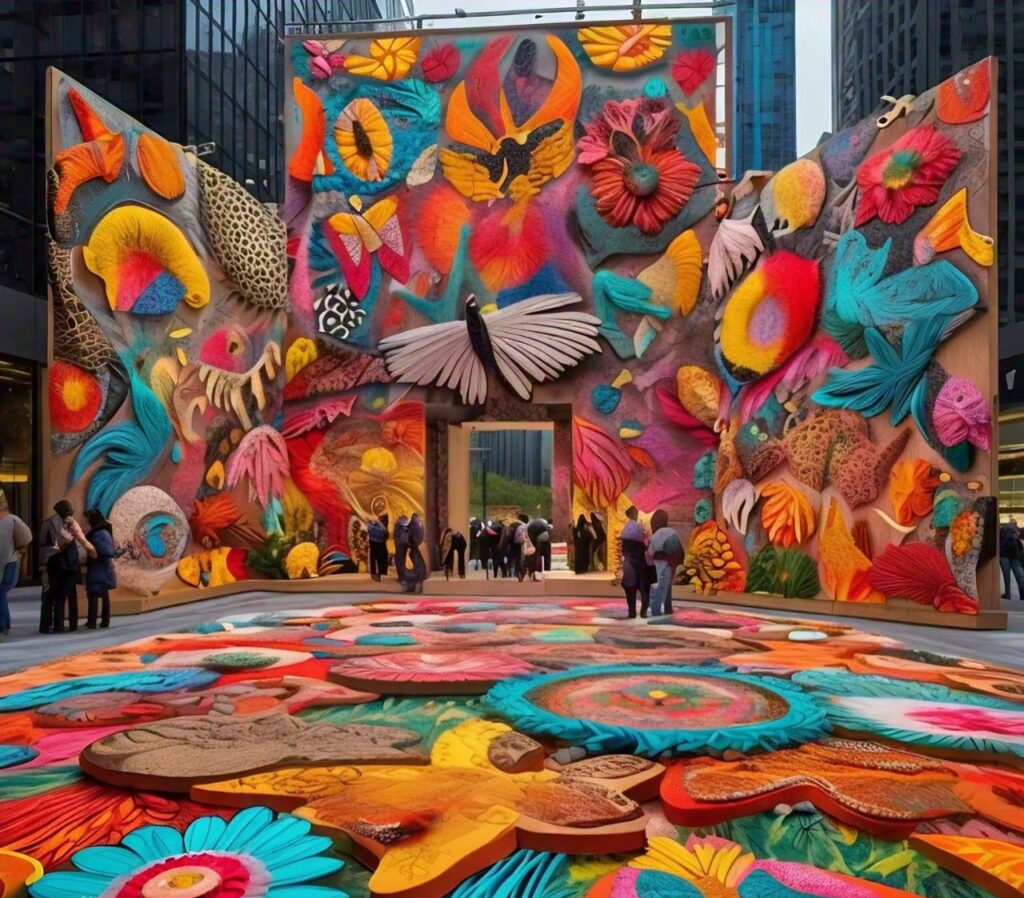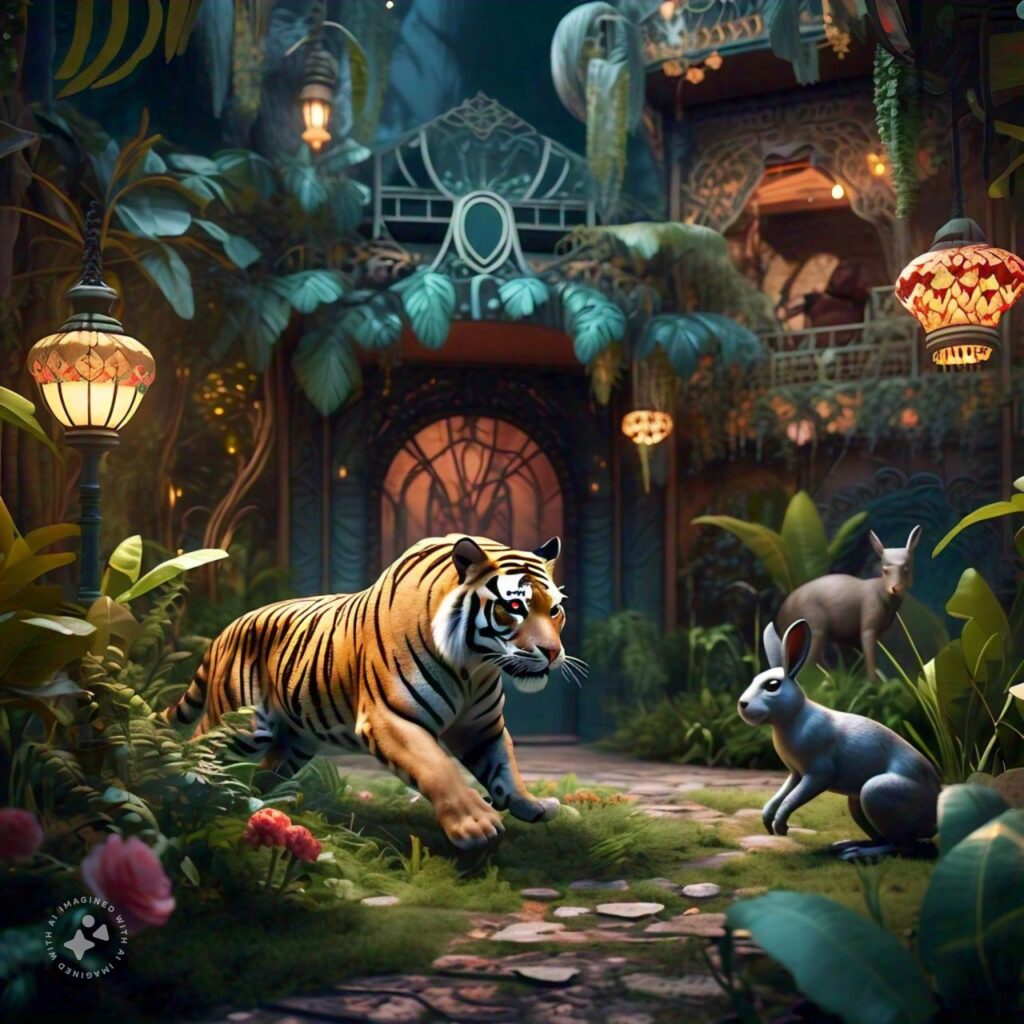Despite the speed and bustle of our modern, urbanized world, the historical and fundamental link between humans and animals is occasionally left out. This essay explores into the exciting theme of the “art of zoo,” which portrays the peace, compassion, and bond humans can share with animals. Through an investigation of the past, present practices, and cultural influence, we seek to shed the spotlight on the vital function that zoos play in modern society.
Historical Development
Early Human-Animal Relationships
Since the very beginning of civilization, there has existed a strong link between mammals and humans. Due to their reliance on animals for survival, early societies of hunter-gatherers domesticated dogs, cattle, and other species. The bedrock for our current intimate ties with animals was set by these early exchanges.
Ancient Civilizations’ Use of Animals
Ancient societies placed great importance on animals, frequently viewing them as gods or powerful symbols. Greek and Roman mythology and art featured animals, while cats were revered and guarded in ancient Egypt. This respect for animals made it possible for early menageries and individual exotic animal collections to be established.
Evolution of Zoos Through History
The first public zoos to open in the eighteenth century were the Vienna Zoo in Austria and the Jardin des Plantes in Paris. Exotic organisms were showcased in these early zoos for the public’s amusement and enlightenment. Over time, zoos expanded from being primarily facilities to view animals on display to becoming centers for conservation, teaching, and research.
Themes and Styles
Harmony and Coexistence
The harmonious integration of people and animals is captured in the “art of zoo.” To increase respect and compassion, contemporary zoos try to replicate natural settings. This topic focuses living in peace with the animal territory.
Conservation and Education
Zoos are crucial to conservation efforts to safeguard species in danger and raise public awareness of the need for maintaining biological diversity. Zoos use exciting exhibits and educational activities to teach the public about the worth of biodiversity and environmental care.
Emotional and Psychological Benefits
Engaging with animals has been shown to alleviate stress, anxiety, and sadness. Zoos assist individuals connect with nature by offering therapeutic interactions and the peaceful help of being around animals. This subject highlights the emotional and psychological benefits of interactions among humans and animals.
Techniques Used
Current Methods of Zoo Management
To guarantee the welfare of their animals, contemporary zoos use a range of management techniques. These consist of nutritional plans, veterinary care, and habitat enrichment. To further animal welfare, zoos also follow strong moral standards.
Animal Enrichment Programs
Boosting the physical and mental well-being of zoo animals is the aim of animal enrichment programs. These programs contain activities such as puzzle feeders, interactive toys, and environment improvements that foster natural behaviors. Enrichment prevents boredom and stimulates active, healthy lifestyles in animals upheld in captivity.
Use of Technology in Zoos
Technological developments have changed the zoo experience. Participation in virtual reality (VR) and augmented reality (AR) are also available to visitors, bringing them new insights into animal habitats. Additionally, behavior recording, analyzing animal health, and increasing conservation efforts are all enabled possible by technology.
Notable Works
Important Zoos in the World
Standards for animal care and conservation have been established by many zoos. For instance, the San Diego Zoo is recognized for its moment efforts in the preservation and breeding of species. In a similar vein, the Bronx Zoo in New York receives praise for both its vast collection of endangered species and its educational offerings.
Key Conservation Projects
Key conservation projects that protect endangered species are carried out by zoos all over the world. For instance, the Smithsonian Conservation Biology Institute specializes in breeding initiatives and research for animals such as Asian elephants and black-footed ferrets. These projects highlight the critical role zoos play in global conservation efforts.
Effective Breeding Initiatives
Zoo breeding efforts have resulted in the successful recovery of many species into the wild. The California condor, which was once in danger of going extinct, has miraculously rebounded thanks to captive breeding tasks. Comparably, coordinated breeding programs in Chinese zoos and other zoos have increased the population of giant pandas.
Cultural Impact
Zoos’ Impact on How People View Wildlife
Zoos have a big influence on how people view wildlife. It fosters awe and respect for the natural world by offering up-close interactions with animals. This effect also includes encouraging tourists to practice environmental stewardship and conservation.
Role in Conservation Awareness
Zoos are essential for bringing attention to conservation-related issues. Zoos educate awareness of animal hazards and the value of conserving biodiversity through media campaigns, outreach to the community, and educational exhibits. This position is essential for obtaining public support for conservation initiatives.
Zoos in Media and Popular Culture
To further increase their cultural impact, zoos are frequently highlighted in the media and popular culture. Zoo-set films, TV series, and documentaries offer an insight into the lives of animals and the conservation efforts they face. A deeper comprehension of the value of zoos in society is facilitated by these depictions.

Contemporary Scene
Current Management Trends in Zoos
Modern zoo management prioritizes conservation, improving animal welfare, and developing naturalistic habitats. Zoos’ futures are being shaped by trends like community involvement, sustainable operations, and immersive exhibits. These patterns show a move in the direction of more moral and accountable zoo management.
Innovations in Animal Care
Zoos are constantly coming up with innovations in animal care. Zoos are implementing innovative techniques to enhance the health and welfare of their animals, ranging from intricate enrichment tools to cutting-edge veterinary care. These developments guarantee the highest standard of care for animals kept in captivity.
Ethical Considerations
There is ongoing debate over whether it is moral to keep animals in captivity. By upholding strict guidelines for animal care, contemporary zoos are dedicated to resolving moral dilemmas. It also entails making sure that animals are not used for entertainment purposes and providing sufficient space and enriching surroundings.
Exhibitions and Galleries
Must-Visit Zoos and Wildlife Parks
Zoos and animal parks are a must-see anywhere in the entire world since they provide unique and educational activities. The Singapore Zoo is famous for its open-concept exhibits which provide guests with an immersive experience. Similarly, the Australian Zoo, which is home to an assortment of native wildlife, offers interactive programs for visitors to get stuck in with the animals.
Noteworthy Exhibitions and Programs
Zoos frequently have noteworthy visitor-educational and engaging programs and exhibitions. These consist of interactive workshops, special exhibits on endangered species, and seasonal events. These initiatives foster a greater awareness of wildlife and improve the visitor experience.
Virtual Zoo Experiences
In the interaction to the digital age, many zoos have developed virtual experiences that enable visitors to see animal exhibits from the comfort of their own homes. Live animal cameras, interactive web programs, and virtual tours each offer unique learning and engagement opportunities. These virtual experiences are making zoo visits available to a broader population.
Collecting
Zoos’ Function in Preserving Species
They are vital to the preservation of species due to their carry out breeding programs and conservation efforts. Zoos maintain genetically diverse populations, assisting in the long-term survival of threatened animals. In the attempt to prevent extinction, this purpose is crucial.
Genetic Diversity’s Significance
Animal populations need genetic diversity to be resilient and healthy. Zoos employ carefully monitored breeding programs to preserve genetic diversity. This guarantees that populations of captive animals stay healthy and able to adjust to their changing surroundings.
Partnerships with Other Conservation Organizations
Zoos frequently work together with other conservation groups to accomplish shared objectives. These collaborations encourage the sharing of information and resources and improve the efficacy of conservation initiatives. Zoos and conservation groups can jointly have a bigger effect on the preservation of wildlife.
For more, read: Relationships
FAQs
What kinds of art fall under the category of zoo art?
Literature, visual arts like paintings and sculptures, photography, films, and performances that show or honor animals and their relationships with people are examples of art forms.
In what ways does zoo art impact culture and society?
It frequently reflects ethical considerations, conservation efforts, and cultural attitudes toward animals, influencing public opinion and animal rights advocacy.
Where is the place to witness zoo art?
Exhibits, galleries, wildlife sanctuaries, and internet platforms are frequently used to present artwork and projects that investigate the bond between people and animals.
Does zoophilia have a connection to zoo art?
No, zoophilia (a mental health condition defined by a desire to have sexual relations among animals) is not the same as zookeeping. Creative and cultural representation of connections between people and animals are the primary theme of zoo art.
Conclusion
The “art of zoo” is proof of the enduring relationship between people and animals. By appreciating this concept, we may deepen our appreciation of nature and foster a more healthy living together with the animal kingdom. We must never stop voicing our backing for zoos’ conservation efforts if we are to ensure their ability to play a crucial part in preserving the biodiversity of our planet.

